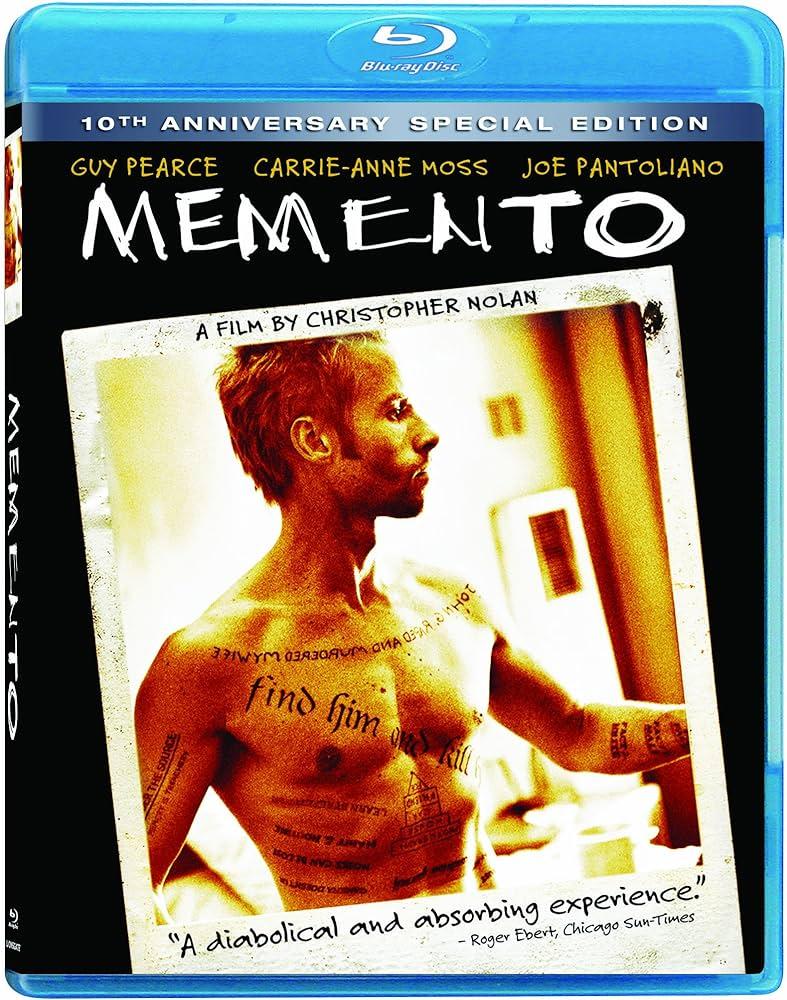In the realm of modern cinema, few directors have mastered the art of the plot twist as deftly as Christopher Nolan. Renowned for his cerebral storytelling and complex narratives, Nolan has consistently pushed the boundaries of conventional filmmaking. Among his illustrious body of work, “Memento” stands out as a seminal piece that not only challenged audience perceptions but also redefined narrative structure. Released in 2000, this psychological thriller introduced viewers to a uniquely disorienting experience, weaving a tale that unfolds in reverse. As we explore the intricacies of Nolan’s filmography, one question persists: Is ”Memento” still his most ingenious plot twist? This article delves into the elements that make “Memento” a masterclass in narrative innovation and examines whether its groundbreaking twist remains unparalleled in Nolan’s oeuvre.
Examining the Narrative Structure: Unraveling Mementos Complexity
The brilliance of Memento lies in its intricate narrative structure, which challenges conventional storytelling by intertwining two timelines—one moving forward and the other backward. This dual approach is more than a mere gimmick; it serves as a profound exploration of memory and identity. By revealing the protagonist’s fragmented reality in reverse, Christopher Nolan allows the audience to experience the disorientation and confusion that plague Leonard Shelby, making each revelation a pivotal piece of a complex puzzle.
- Non-linear storytelling: Nolan masterfully manipulates time, creating a labyrinthine plot that demands active viewer engagement.
- Character alignment: The structure aligns the audience’s understanding with Leonard’s, immersing them in his quest for truth.
- Thematic depth: The interplay of timelines underscores themes of memory, trust, and the subjective nature of truth.
This innovative approach not only captivates but also compels viewers to question the reliability of perception, reinforcing Memento‘s status as a cinematic enigma.

Comparative Analysis: Memento vs. Nolan’s Other Twists
- Memento: This film stands out with its ingenious reverse chronology, immersing viewers in Leonard Shelby’s fragmented reality. The narrative structure itself becomes a puzzle, mirroring Leonard’s struggle with memory loss. By intertwining two timelines—one moving forward in color, the other backward in black-and-white—Nolan crafts a disorienting yet compelling experience, culminating in a twist that forces the audience to reconsider everything they’ve seen.
- Inception: Here, Nolan dives into the layers of dreams within dreams. The plot twist revolves around the ambiguity of Cobb’s reality, leaving audiences questioning the nature of the film’s ending. While thought-provoking, the twist hinges more on philosophical interpretation than the structural complexity seen in Memento.
- The Prestige: Nolan presents a dual narrative filled with rivalry and obsession. The twist here reveals the true cost of ambition, with a revelation about duality and sacrifice. Though impactful, it follows a more traditional storytelling arc compared to Memento’s radical approach.
In comparing these films, Memento’s twist remains unique for its execution and narrative innovation. While Nolan’s other works are undeniably clever, none quite match the structural brilliance and emotional resonance of Memento’s unforgettable climax.

Character Motivations and Viewer Perception: A Deeper Dive
In “Memento,” the motivations driving Leonard Shelby are as fragmented as his memory, presenting a complex puzzle for viewers. His quest for vengeance is fueled by a tragic past he struggles to piece together, making his actions both relatable and alienating. As the film unfolds in reverse, each revelation forces the audience to question the reliability of Leonard’s narrative, creating a dynamic interplay between empathy and skepticism.
- Unreliable Narrator: Leonard’s subjective reality challenges viewers to discern truth from illusion.
- Fragmented Timeline: The non-linear storytelling mirrors Leonard’s disoriented mental state, inviting deeper analysis.
- Ethical Ambiguity: The moral implications of Leonard’s actions provoke debate on justice and morality.
By intricately weaving these motivations with the audience’s perception, Nolan crafts a narrative that is as much about the characters as it is about the viewers themselves. This dual-layered experience keeps “Memento” a subject of admiration and analysis, raising the question of whether it remains Nolan’s most ingenious twist.

Recommendations for Rewatching: Appreciating the Subtle Details
Revisiting Memento offers a unique opportunity to delve deeper into Christopher Nolan’s intricate narrative. On a second or third viewing, the film reveals layers that might initially go unnoticed. Pay close attention to the seemingly insignificant details that Nolan meticulously crafts to enhance the storytelling.
- Visual Cues: Notice the color schemes that distinguish between timelines, offering subtle hints about Leonard’s fractured reality.
- Dialogue Nuances: Characters often drop hints about their true intentions. Listen carefully to the conversations, especially those involving Teddy and Natalie.
- Symbolism: Objects like the Polaroid photos and tattoos are not just plot devices but are rich with symbolic meaning, reflecting Leonard’s quest for truth.
By focusing on these elements, viewers can gain a richer understanding of Nolan’s storytelling prowess, solidifying Memento as a masterpiece that rewards those who dare to look beyond the surface.

